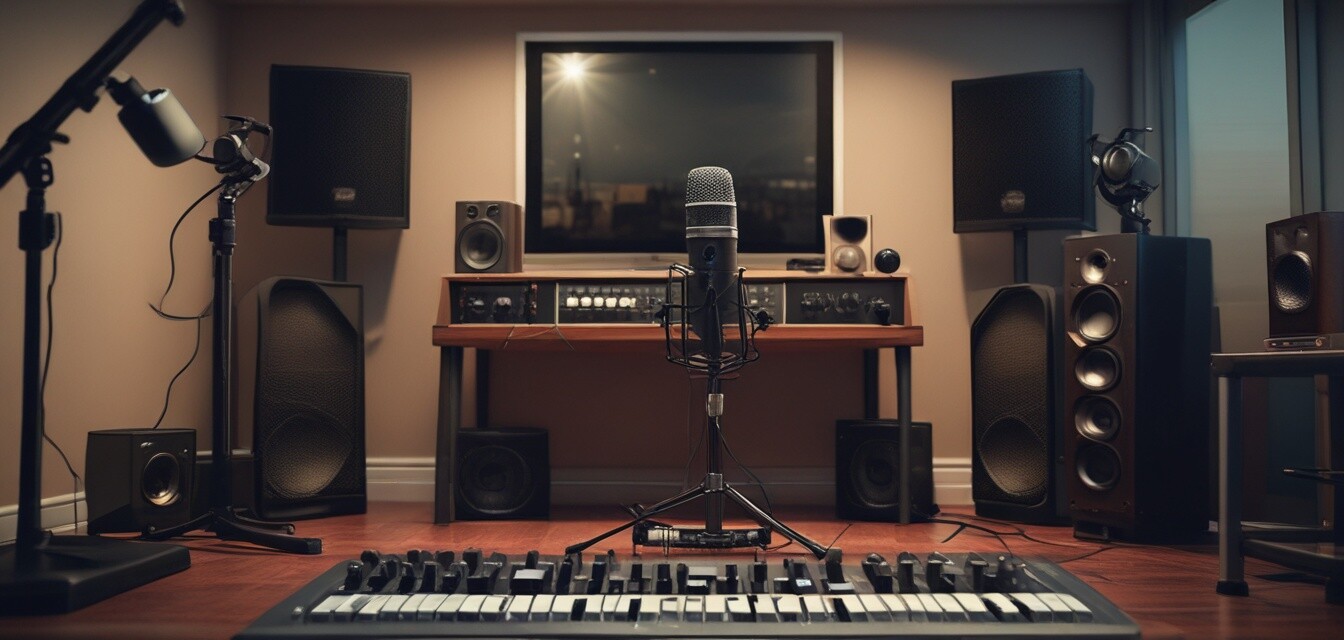
How to Record High-Quality Audio at Home
Key Takeaways
- Invest in quality audio recording equipment.
- Optimize your recording environment to reduce noise.
- Utilize appropriate software for editing and mixing audio.
- Regular maintenance of equipment ensures long-term quality.
Recording high-quality audio at home has become increasingly accessible thanks to advances in technology and affordable equipment. Whether you're a musician, podcaster, or content creator, understanding the essentials of audio recording can elevate your craft. This guide will share practical techniques and gear recommendations to achieve professional sound from the comfort of your home.
Essential Equipment for Quality Audio Recording
To start, having the right audio recording gear is crucial. Here’s a breakdown of the essential items:
| Equipment | Description |
|---|---|
| Microphone | A high-quality microphone captures sound accurately. Consider a condenser mic for vocals and instruments. |
| Audio Interface | This device connects your microphone to your computer, improving sound quality and providing phantom power. |
| Headphones | Closed-back headphones are recommended to avoid sound leakage and ensure accurate monitoring. |
| Microphone Stand | A stable stand holds your microphone in place, allowing for hands-free recording. |
| Pop Filter | This accessory reduces plosive sounds like 'p' and 'b' for cleaner recordings. |
Setting Up Your Recording Space
Creating the right environment is just as important as your gear. Here are some tips to optimize your home studio:
Tips for Soundproofing Your Space
- Choose a quiet room away from outside noise.
- Use acoustic panels to reduce echoes and sound reflections.
- Cover floors with carpets or rugs to dampen sound.
- Seal any gaps in windows and doors to block outside noise.
- Consider using furniture like bookcases to help absorb sound.
Best Software for Recording and Editing
Once your physical setup is complete, you'll need software to record and edit your audio. Here are popular options:
- Audacity - A free, open-source audio editing software with a wide range of features.
- GarageBand - An intuitive program for Mac users, great for music production.
- Adobe Audition - A professional-grade software offering advanced features and effects.
- Logic Pro - A comprehensive tool for music production with extensive editing options.
Recording Techniques for High-Quality Audio
Here are some best practices to keep in mind while recording:
- Mic Placement: Experiment with distances and angles to find the sweet spot for your microphone.
- Monitor Levels: Keep an eye on input levels to avoid clipping or distortion.
- Create a Comfortable Atmosphere: Ensure comfortable lighting and room temperature; it helps performers stay relaxed.
Post-Production and Mixing
The magic of sound quality often happens in post-production. Here are steps for mixing:
- Apply EQ to balance frequencies.
- Add compression to maintain a consistent dynamic range.
- Incorporate reverb or delay for depth and richness.
- Finish with mastering to enhance audio output for various platforms.
Featured Product: TOPTRO TR27 Mini Projector
A great audio recording experience often goes hand-in-hand with effective visual presentation, especially for video content. Check out this versatile projector that might enhance your home studio setup:
TOPTRO TR27 Mini Projector
A portable projector with native 1080P resolution and 4K support, perfect for creating stunning visuals in your recordings.
Learn MoreFinal Thoughts
Recording high-quality audio at home is entirely possible with the right setup and techniques. By investing in quality gear, optimizing your space, and mastering post-production techniques, you can produce professional-grade audio without leaving your home. For more tips on optimizing your gadgets, check out our How-to Guides.
Pros
- Cost-effective solutions for audio recording.
- Flexibility to record any time without studio pressure.
- Creative freedom as you control your recording space.
Cons
- Initial setup can be overwhelming for beginners.
- Potential for poor acoustics if space is not treated.
- Equipment maintenance can be time-consuming.

